The entire planet will be submerged in 6 meters of water permanently if this disaster is not averted: Future cataclysm?
- Tram Ho
The year 2021 is coming to an end. The whole world is straining against the Covid-19 pandemic. And there are the ‘wars’ that people have to face – those are environmental issues.
The climate crisis is growing at an unprecedented rate, and we humans… are not ready for it.
Is the environmental picture in 2021 bright or bleak? We invite you to follow the biggest environmental problems of the year through Earth.org ‘s article, including the problem of massive melting of the world’s ice, which can cause a terrible cataclysm!

01. POOR GOVERNMENT
According to British economist Nicholas Stern, the climate crisis is the result of many market failures.
Economists and environmentalists have urged policymakers for years to raise the price of activities that emit greenhouse gases (one of our biggest environmental problems). For example, a very high carbon tax to limit CO2 emissions into the atmosphere.
To cut emissions quickly and efficiently, governments must not only increase funding for green innovation to reduce the cost of low-carbon energy sources, but also need to adopt a range of other policies to reduce emissions. address each other market failure.
National carbon taxes are currently in place in 25 countries around the world, including various countries in the EU, Canada, Singapore, Japan, Ukraine and Argentina.
However, according to the Organization for Economic Co-operation and Development (OECD) Energy Use Tax report 2019, the current tax structure does not match the pollution profile of energy sources. For example, the OECD suggests that a carbon tax is not harsh enough for coal production, even though it has been shown to work for the power sector.
The Paris Agreement, an agreement under the United Nations Framework Convention on Climate Change, states that countries need to significantly reduce their greenhouse gas emissions for global temperatures to rise below 2 degrees Celsius by 2100. and ideally below 1.5 degrees Celsius. But signing it is voluntary; and there are no real consequences for non-compliance.
02. FOOD WASTE / FOOD WASTE
One-third of the food consumed by humans – about 1.3 billion tonnes of food – is wasted or wasted . This is enough to feed 3 billion people. Food waste/leftovers cause 4.4 gigatons of greenhouse gas emissions annually; If it were to act as a country, food waste would be the third highest emitter of greenhouse gases, after China and the US.
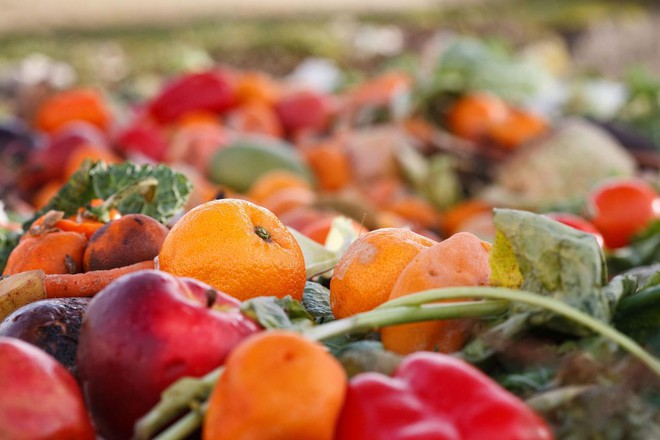
Food waste and excess occurs at different stages in developing and developed countries; In developing countries, 40% of food waste occurs at the post-harvest and processing levels – while in developed countries 40% of food waste occurs at the retail and consumer levels.
At the retail level, a shocking amount of food is wasted for aesthetic reasons; In fact, in the US, more than 50% of all produce is thrown away in the US because it is deemed “too bad” to be sold to consumers – this amounts to about 60 million tons of fruit and vegetables.
This leads to food insecurity, one of the biggest environmental problems on the list.
03. LOST OF BIODIVERSITY
The past 50 years have seen rapid increases in human consumption, population, global trade and urbanization, resulting in humanity using more of the Earth’s resources than it can naturally replenish. .
A recent report by the World Wide Fund for Nature (WWF) found that the population size of mammals, fish, birds, reptiles and amphibians decreased by an average of 68% between 1970 and 2016. .
This loss of biodiversity is due to many factors, but mainly land-use changes, particularly the conversion of habitats, such as forests, grasslands and mangroves, into agricultural systems, the report says. Karma. Animal species such as pangolins, sharks and seahorses are significantly affected by the illegal human wildlife trade.
More broadly, a recent analysis has found that the sixth mass extinction of wildlife on Earth is on the rise. More than 500 species of terrestrial animals are on the verge of extinction and are likely to disappear within 20 years; Similar numbers have been lost during the last century.
Scientists say that without man’s destruction of nature, this rate of loss would take thousands of years.
04. PLASTIC POLLUTION
In 1950, the world produced more than 2 million tons of plastic per year. By 2015, this annual production had increased to 419 million tons and exacerbated plastic waste in the environment.
A report in the scientific journal Nature has determined that around 11 million tons of plastic now enter the oceans each year, harming wildlife habitat and the animals that live in it.
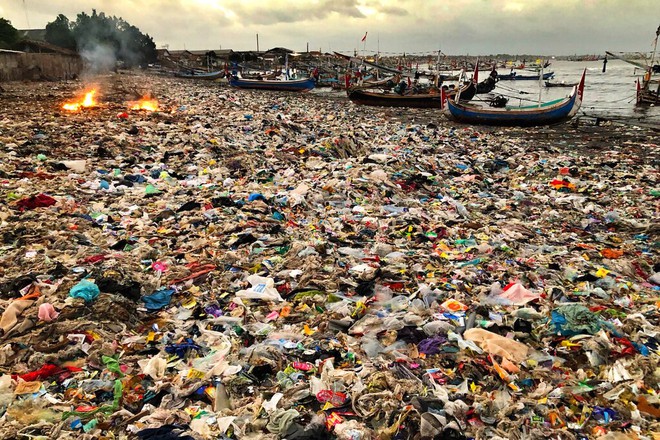
Image of EO Photographer Vincent Kneefel
Research shows that if no action is taken, a plastic pollution crisis will ensue. By 2040, plastic waste in the ocean will increase to 29 million tons per year. If microplastics are included, the amount of plastic accumulated in the ocean could reach 600 million tons by 2040.
Shockingly, National Geographic found that 91% of all plastic ever produced is not recycled, not only one of the biggest environmental problems of our lifetime, but also a huge failure. other on the market.
Plastic takes 400 years to decompose, so plastic waste affects many more generations until it no longer exists. The irreversible effects of plastic pollution on the environment in the long run cannot be predicted.
05. FOREST CLEARANCE
Every minute, forests the size of 20 football fields are cut down. By 2030, the planet could have only 10% of the forest area left ; If deforestation is not stopped, they could all be gone in less than 100 years.

Agriculture is the leading cause of deforestation – one of the biggest environmental problems to appear on this list.
Besides absorbing carbon, forests also help prevent soil erosion, as tree roots bind to the soil and prevent it from washing away, which also prevents landslides.
The three countries with the highest levels of deforestation are Brazil, the Democratic Republic of the Congo and Indonesia, yet Indonesia is tackling deforestation, which now has the lowest rates since the turn of the century.
06. AIR POLLUTION
Research by the World Health Organization (WHO) shows that an estimated 4.2-7 million people die from air pollution worldwide each year and 9 out of 10 people breathe contaminated air. contain high concentrations of pollutants.
In Africa, 258,000 people died from outdoor air pollution in 2017, up from 164,000 in 1990, according to UNICEF.
The major causes of air pollution come from industrial sources and motor vehicles, as well as emissions from biomass burning and poor air quality due to dust storms.
In Europe, a recent report by the European Union’s (EU) environment agency found that air pollution contributed to 400,000 EU deaths annually in 2012 (the last year for which data is available). Whether).
07. BIGGER FROM GLOBAL WARMING
At this point, the CO2 PPM (parts per million) is at 410 and the global temperature increase is 0.89 degrees Celsius.
Rising greenhouse gas emissions have caused temperatures to rise, triggering catastrophes around the world – in 2021 alone. Scientists warn that the planet has passed a series of destinations term can have dire consequences. Here is the proof:
Australia has experienced one of the most devastating bushfire seasons ever recorded; locusts swarm all parts of Africa, the Middle East and Asia; microplastics were first found in Antarctic ice; a heatwave in Antarctica saw temperatures rise above 20 degrees Celsius for the first time; permafrost is melting in the Arctic; Greenland’s ice melts at an unprecedented rate; news of the sixth mass extinction is on the rise; increasing deforestation in the Amazon rainforest;
China is experiencing its worst flooding in decades; highest concentrations of methane increase in history; Canada’s last intact iceberg has collapsed; a national park in the US recorded the highest temperature ever recorded on Earth; 13% of deaths in the EU are linked to different forms of pollution; record wildfires in California (USA) blocked the sun – and this is only a fraction of the facts!
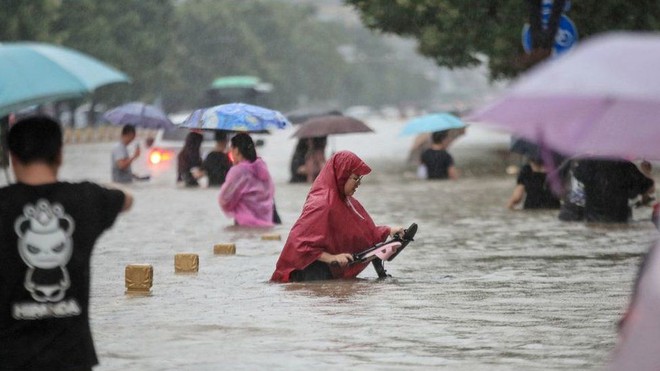
The climate crisis is making tropical storms and other extreme weather events such as hurricanes, heat waves and floods more intense and frequent than before.
A study has found that even if greenhouse gas emissions were stopped by 2021, global warming would only stop around 2034.
08. GROWTH OF ICE – SEAL GROWTH
The climate crisis is warming the Arctic twice as fast as anywhere else on the planet. The sea is currently rising by an average of 3.2 mm per year globally and is predicted to climb a total of 0.2 to 2m by 2100.
In the Arctic, the Greenland ice sheet poses the greatest risk to sea levels because melting land ice is what causes sea levels to rise.
The melting ice that causes sea level rise represents arguably the biggest environmental problem, which worries scientists more than ever when it is confirmed that the summer of 2020 has cost Greenland 60 billion tons. enough ice to raise global sea levels by 2.2mm in just two months.
According to satellite data, the Greenland ice sheet lost a record amount of ice in 2019: One million tons per minute on average throughout the year. Forecast, if the entire ice sheet in Greenland melts, sea level will rise by 6 meters! At that time, the whole Earth will be submerged in water!
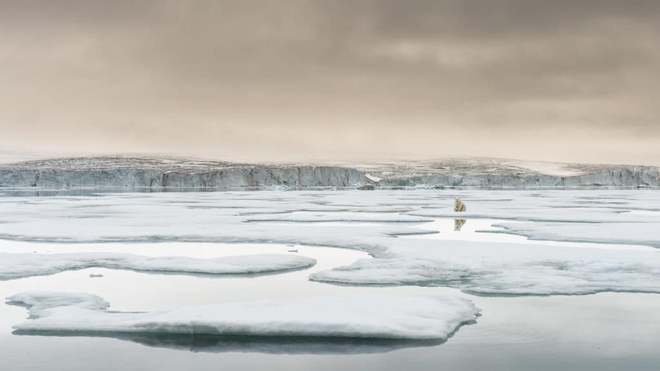
Meanwhile, the continent of Antarctica contributes about 1 millimeter per year to sea level rise, which is a third of the total annual global increase.
Additionally, the last fully intact ice shelf in Canada recently collapsed, losing about 80 square kilometers, or 40% of its area, over a two-day period in late July, according to the Canadian Ice Service.
Sea-level rise will have devastating effects on people living in coastal areas, according to research and advocacy group Climate Central, rising sea levels this century could potentially inundate coastal areas today. is home to 340 million to 480 million people, forcing them to migrate to other areas.
Without decisive and decisive action, the whole world will meet this terrible cataclysm.
09. OCEAN CHEMICAL ACID
Rising global temperatures not only affect the surface but are a major cause of ocean acidification. Our oceans absorb about 30% of the carbon dioxide (CO2) released into the Earth’s atmosphere. As higher concentrations of carbon emissions are released – due to human activities such as burning fossil fuels as well as the effects of global climate change such as increased rates of wildfires – carbon dioxide is released. Absorption back into the sea also increases.
The slightest change in the pH scale can have a significant impact on the acidity of the ocean. Ocean acidification can create ripple effects on marine ecosystems and species, its food web, and cause changes in habitat quality. When the pH drops too low, marine life such as oysters, their shells and bones can even begin to dissolve.
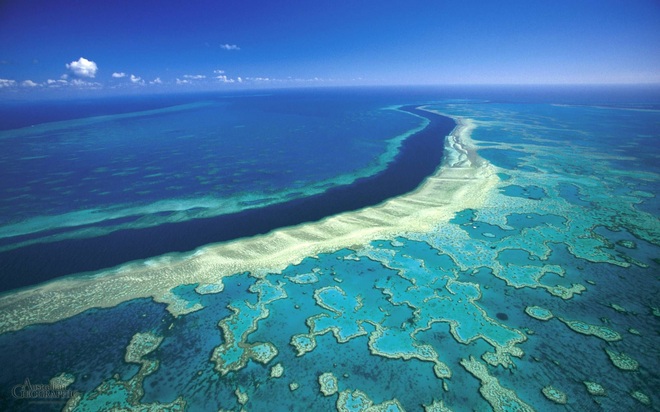
Great Barrier Reef in Australia.
However, one of the biggest ocean acidification effects that can be seen is coral bleaching and subsequent loss of coral reefs. This is what happens when rising ocean temperatures disrupt the symbiotic relationship between reefs and the algae that live in them, driving away the algae and causing coral reefs to lose their natural vibrant colors.
Some scientists estimate coral reefs are at risk of being completely wiped out by 2050 . Higher acidity in the ocean would impede the reef system’s ability to rebuild the exoskeleton and recover from these coral bleaching events.
Some studies have also found that ocean acidification can be considered as one of the effects of plastic pollution in the ocean. The accumulation of bacteria and microorganisms derived from plastic waste dumped into the ocean damages marine ecosystems and contributes to coral bleaching.
10. AGRICULTURE
Studies have shown that the global food system is responsible for up to a third of all anthropogenic greenhouse gas emissions , of which 30% comes from livestock and fisheries. Crop production releases greenhouse gases such as nitrous oxide through the use of fertilizers.
60% of the world’s agricultural area is devoted to livestock, even though it accounts for only 24% of global meat consumption.
Agriculture not only covers large amounts of land but also consumes large amounts of fresh water, one of the biggest environmental problems on this list. While arable land and pastures cover one-third of the Earth’s land surface, they consume three-quarters of the world’s limited freshwater resources.
Scientists and the environment have repeatedly warned that we need to rethink our current food system. Switching to a more plant-based diet would significantly reduce the carbon footprint of conventional agriculture.
11. UNSAFE FOOD AND WATER
Rising temperatures and unsustainable farming have led to an increasing threat to water availability and food insecurity.
Globally, more than 68 billion tons of top soil is eroded annually at a rate 100 times faster than natural replenishment.
A major contributor to soil erosion is over-tipping: Although it increases yields in the short term by mixing in surface nutrients (e.g. fertilizers), tilling can destroy soil structure. soil structure and in the long run leads to soil compaction, loss of fertility and the formation of topsoil, which exacerbates topsoil erosion.
With a global population expected to reach 9 billion people by mid-century, the Food and Agriculture Organization of the United Nations (FAO) forecasts that global food demand could increase by 70% by 2050. Globally, more than 820 million people do not have enough to eat.

UN Secretary-General António Guterres said: “Unless immediate action is taken, it is becoming increasingly clear that there is an impending global food security emergency that could have lasting effects on hundreds of thousands of people. million adults and children”. He called on countries to review their food systems and encourage more sustainable farming practices.
In terms of water security , only 3% of the world’s water is freshwater, and two-thirds of it is hidden in frozen glaciers or unavailable for us to use.
As a result, about 1.1 billion people around the world lack water and a total of 2.7 billion people find water scarce for at least one month of the year. By 2025, two-thirds of the world’s population could face water shortages.
While these are some of the biggest environmental problems facing our planet, there are still many more that have not been addressed, including overfishing, urban sprawl, toxic locations, and more. damage and change in land use.
While there are many aspects that need to be considered in developing a crisis response, they must be well coordinated, practical, and far-reaching enough to make a difference.
Translated from: Earth.org
Source : Genk
